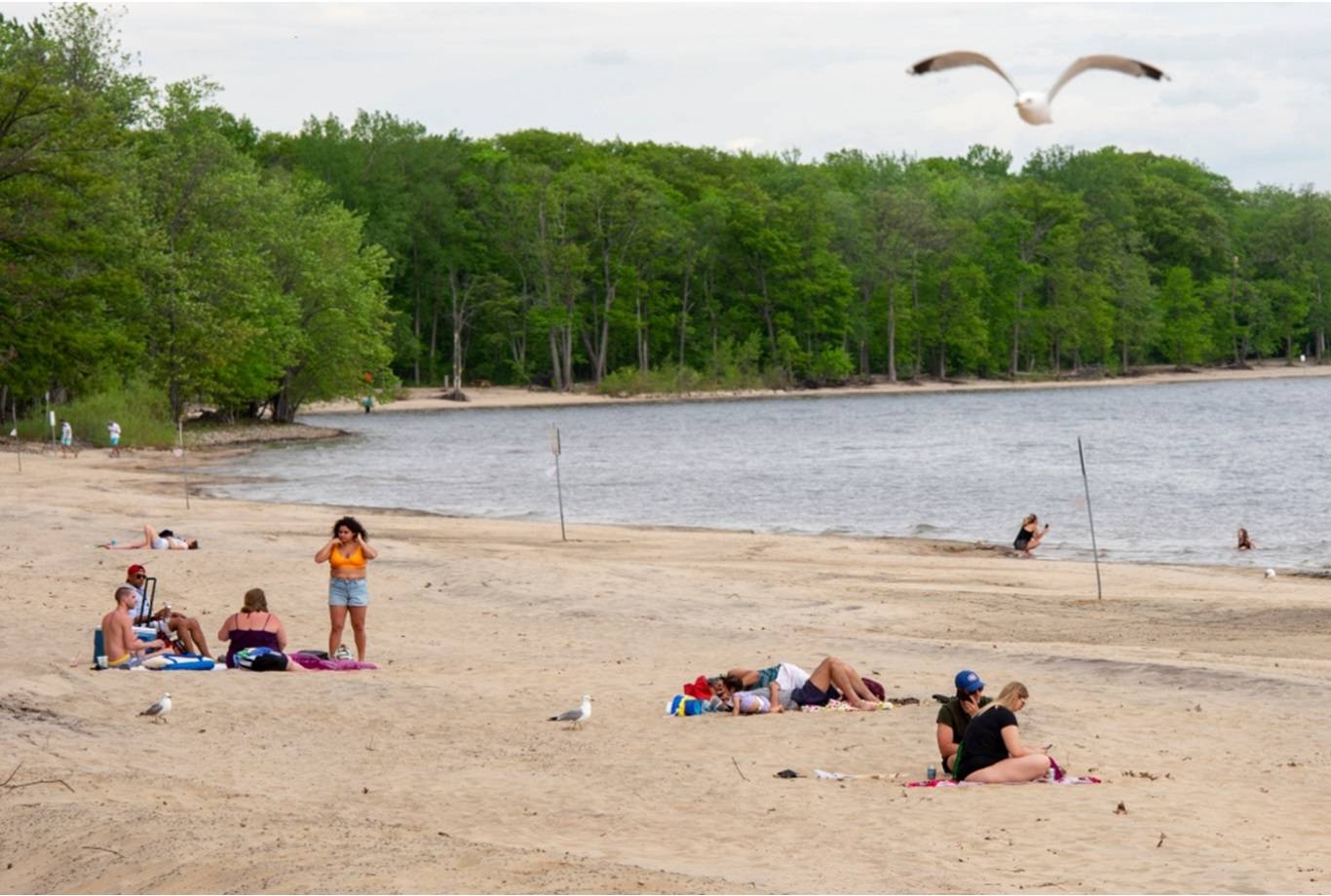
Individuals seek relief from high temperatures as they enjoy the beach at Oka Provincial Park in Oka, Quebec, on Thursday, May 28, 2020. The image is credited to THE CANADIAN PRESS photographer Ryan Remiorz.
In a collaborative effort between the Bibliothèque et Archives nationales du Québec (BAnQ) and Sépaq, Quebec residents now have the opportunity to enjoy the tranquility of nearly a dozen provincial parks for free, courtesy of their library card.
Unveiled on Tuesday, the "Borrow a National Park" pilot project allocates 50 passes for daily access to 11 parks. Marie Grégoire, the President and CEO of BAnQ, emphasized the cultural significance of nature, stating, "Nature is culture! National parks are part of our heritage, just like the wealth of documents that BAnQ offers to the public."
The initiative is available at Montreal's Grande Bibliothèque, offering 35 passes for seven parks, and the National Archives in Quebec City, providing 15 passes for four parks. Each pass, valid for two adults, allows three weeks of day access to the designated parks. Notably, the pass cannot be renewed, and individuals are restricted to holding only one pass at a time. Children aged 17 and under, accompanied by an adult, can enter the parks for free.
To secure a pass, individuals can make online reservations by searching for "Borrow a National Park" in the BAnQ catalogue. Once a pass becomes available, recipients will receive a notification to pick it up at one of the two libraries, depending on their chosen park.
Jacques Caron, President and CEO of Sépaq, expressed the goal of connecting people with the natural beauty of Quebec, emphasizing its unparalleled potential as a place for escape and relaxation. The initiative aims to provide residents with the opportunity to enjoy the numerous benefits of connecting with nature.
Passes are accessible at the Grande Bibliothèque in Montreal for parks such as Îles-de-Boucherville, Mont-Saint-Bruno, Oka, Yamaska, Mont-Orford, Mont-Tremblant, and Plaisance. Meanwhile, passes at the National Archives in Quebec City cover Jacques-Cartier, Grands-Jardins, Hautes-Gorges-de-la-Rivière-Malbaie, and Frontenac.
This novel project serves as a gateway for Quebec residents to explore the natural treasures within their province, fostering a deeper connection between the community and the rich cultural and environmental heritage embodied by these parks.















